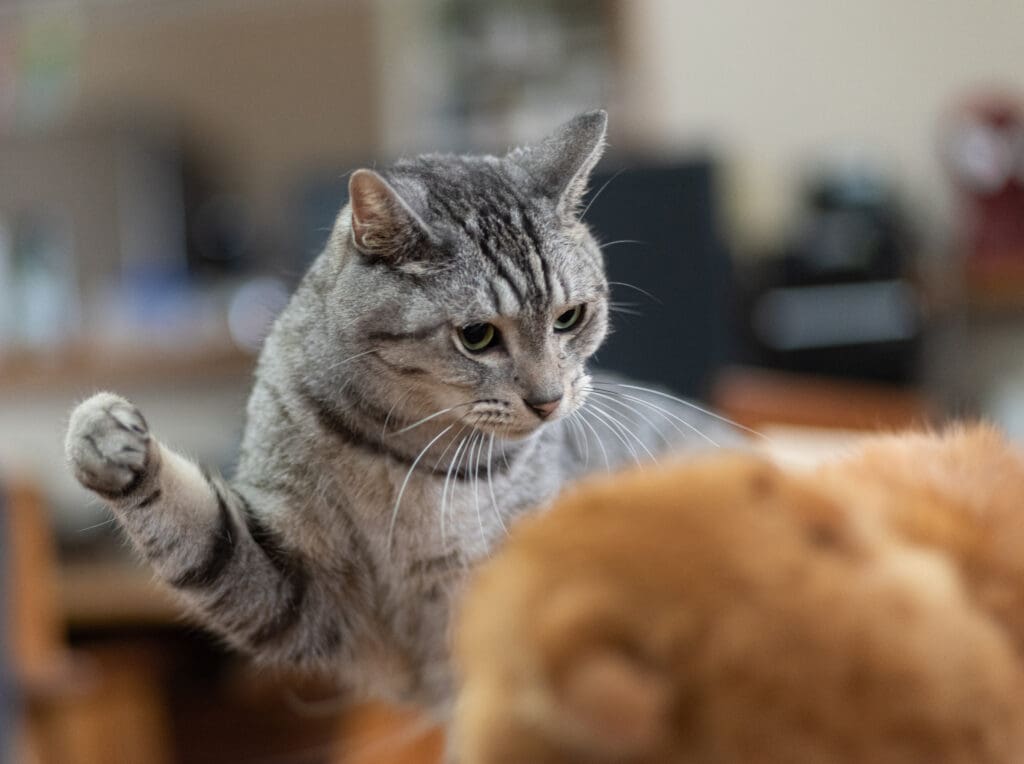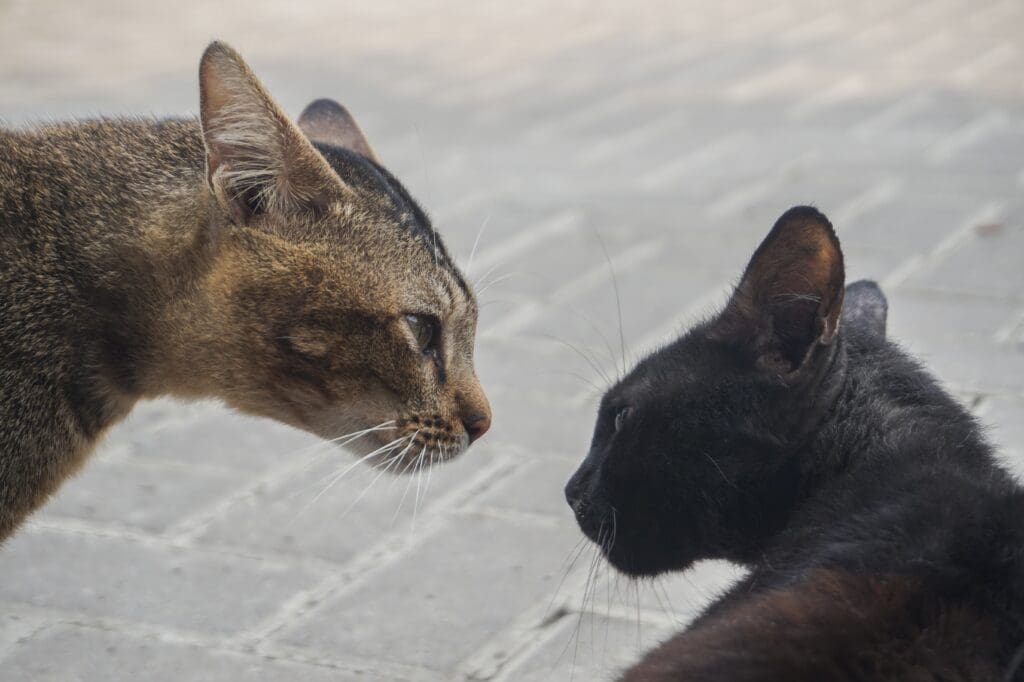Why do my cats fight?
by Caroline Crevier-Chabot
A home with more than one cat is not always easy. Cats come from ancestors that were solitary and that met only to reproduce. In the course of their evolution, domestic cats have become more social, but this aptitude is not the same in all individuals.

Factors that influence the ability of a cat to interact socially with other cats include:
- Genetics and epigenetics (the environment influences how genes are expressed),
- The duration during which the cat stayed with their mom and siblings when they were a kitten (at least 16 weeks ideally),
- The life experiences of the cat that involved meeting other cats when they were young and during their development,
- The cat’s past experiences with other cats once they were an adult (positive or negative),
- Their medical state (don’t try to have me meet new people when I have a headache…),
- Their current mood,
- The environment in which they live,
- The types of interactions that they have with their human when there are other cats around,
- , etc.
Stranger, acquaintance, friend… or enemies?
Too many people simply opt to put two cats together and hope that everything goes well. But for the new cat, there’s already a myriad of things that mean that they are stressed:
- From their point of vue, they’ve been kidnapped : they have no idea why they’re here, who you are and what your intentions are,
- They are in a new environment that they don’t know : they don’t know whether there are dangers or not, where the hideouts and perches are to escape those dangers, whether or not there’s something to eat and drink, where they’ll be able to rest without risking being scared or surprised, where the litter box is, etc.,
- They can’t see you as a reassuring point of reference because they don’t know you yet.
It’s already so much stress for that poor cat! Adding stranger cats that could be threatening is not going to help.

Initial separation is therefore the most respectful thing to do for all: that’s how everyone can start to let their shoulders drop, breathe, learn to know their environment slowly and sleep soundly.
It is not up to us to judge what should and should not feel threatening to another living being. If you’re scared of spiders, it doesn’t accomplish anything if I judge that it shouldn’t be the case. If you are scared of getting into a serious relationship, it’s not pertinent for me to think that it shouldn’t be the case. If you feel diminished when I associate you with a sports team, it’s not ok for me to continue to make that association. Your feeling is valid. Your discomfort is valid. If you communicate that discomfort to me, it’s not appropriate for me to disregard it with a wave of the hand. I should rather recognize it and adapt my way of interacting with you so as to avoid those discomforts. We don’t subject others to what we would not want others to impose on us. From the moment I recognize that your reality is as valid as mine, I can start to better help you. It’s the same thing with your cat. Even if you think that they shouldn’t be scared of your other cat, it doesn’t change anything to their reality. By recognizing that their reality is valid, you are putting yourself in a much better state of mind to be able to help them overcome their fears.
Resources for all
If each and every one of your animals cannot:
- eat
- drink
- use the litterbox
- roam in the house
- sleep
- play
- , etc.
WITHOUT FEELING LIKE THEY ARE OBSERVED, BLOCKED, THREATENED by another cat, there’s a problem.
Access to resources for all is the corner stone of a good feline relationship. There needs to be enough resources so that no cat has to wait for their turn or fight to have access to them: we need AT LEAST one resource per cat. That seems like it’s too much? It might be because you have too many cats for your capacity to host them, but often, it’s simply because you don’t have the eye of the behavior consultant to figure out how it’s feasible.
What are resources?
- Litter boxes
- Water sources
- Feeding stations
- Comfortable bedding
- Perches
- Scratchers
- Toys
- , etc.
That’s all?
Oh no! It’s only the basics. The rest is more specific to your particular cats. Whether it’s exercises to build a positive relationship between cats or with the new cat and you, learning news ways of functioning with one another, optimization of the space, etc., all this needs to be tailored to your cats. During a consult, we look at:
- The state of the relationship,
- Preferred associates,
- Possibilities for managing the environment,
- Resources ! (of course) ;
- Reinforcers for each individual,
- Escalation and de-escalation scales for each individual,
- Activities that promote de-escalation for each individual,
- Behavior modification exercises,
- Exercises to develop the relationship,
- , etc.
And we select what will be the most important things to put in place in order for you to reach your goal, making sure that this is feasible for YOU in YOUR home.
Ready for a less chaotic home? We’re here to help!
To book a consult, click here.

